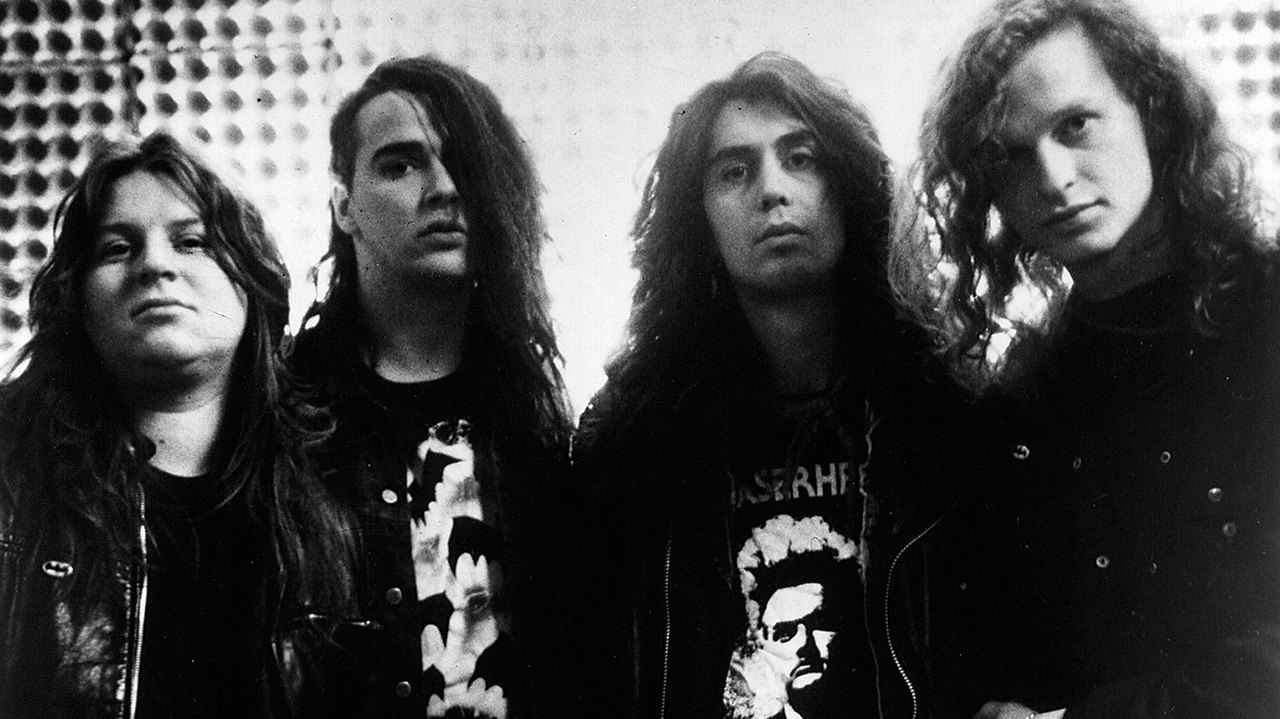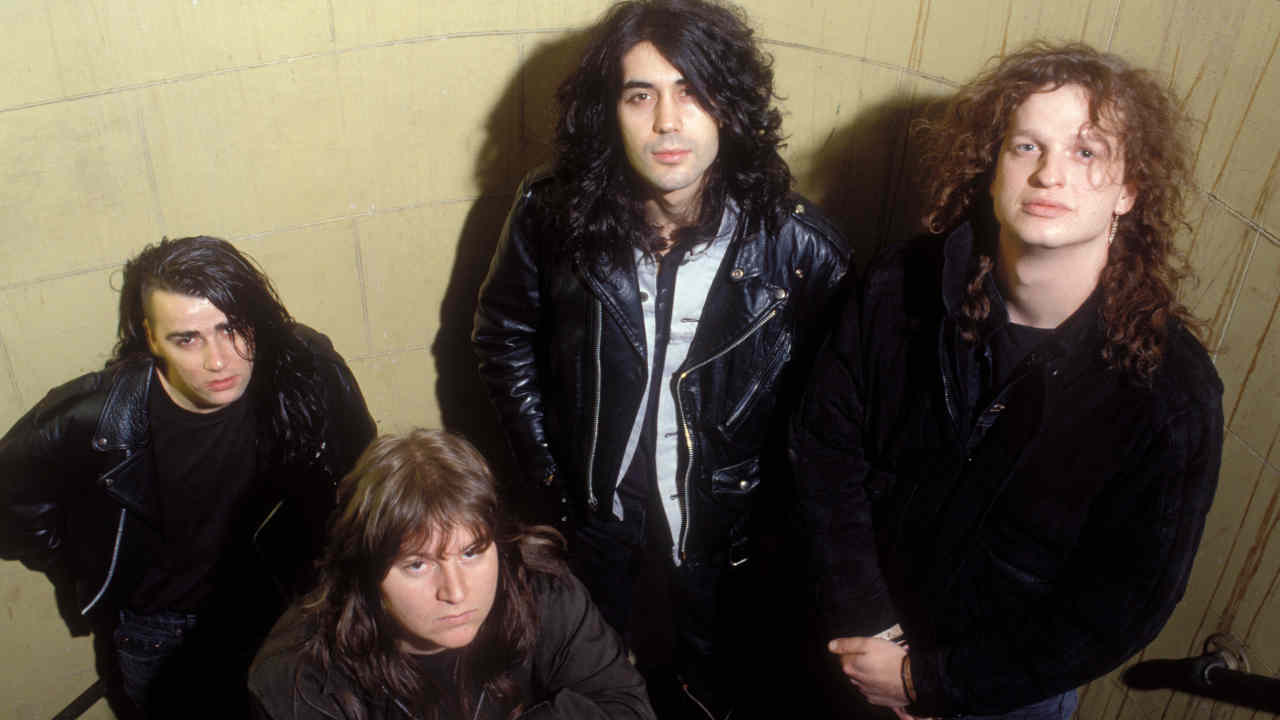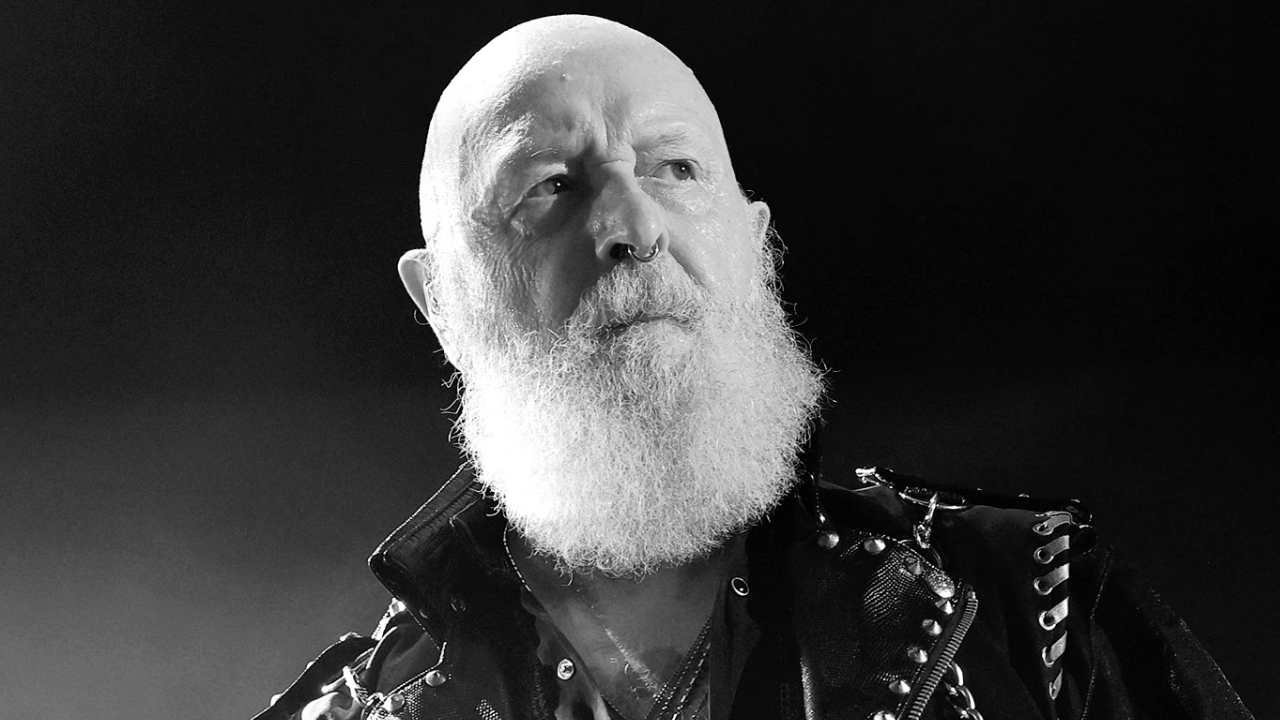“These bikers came bursting into our place. I’m sure we would have been killed”: how violence, rocket attacks and the Cold War helped Voivod make 80s prog-thrash masterpiece Dimension Hatröss
The story of Voivod’s ground-breaking 1988 album Dimension Hatröss, the album that helped shaped modern prog metal

Voivod emerged from the early 80s thrash scene, but they soon headed off in their own, brain-frying direction. Released in 1988, the Canadian band’s fourth album, Dimension Hatröss, was a groundbreaking fusion of metal, prog and industrial music. In 2005, drummer Michel ‘Away’ Langevin and late guitarist Denis ‘Piggy’ D’Amour looked back on the making of a record that was years ahead of its time.
In the late 80s, two bands turned the whole concept of metal on its head – and it took years for most people to realise the impact and importance of what they did. While the greatness of Metallica and Slayer is unquestioned, their achievements rest on expanding on styles and sounds already in existence. But Switzerland’s Celtic Frost and Voivod from Canada pushed beyond the boundaries of the genre. They were true pioneers.
Celtic Frost had their finest moment with 1987’s remarkable Into The Pandemonium album. For Voivod, everything crystalised a year later with their mind-bening fourth album, Dimension Hatröss. Its creation is a tale of near death experiences with bikers, rocket attacks in Berlin, and an intensity so great it nearly tore the band apart. But this album also opened Voivod to the rich possibilities in their musical vision.
“We discovered electronics!” says drummer Michel ‘Away’ Langevin,. “When we recorded Dimension Hatröss in Berlin we made the transition from thrash metal to something very, very different.”
The band were formed in Jonquière, Quebec 1983, a combination of Langevin’s artist conception of ‘The Voivod’ – a post-nuclear, vampiric creature – and the musical acuity of Denis D’Amour, better know as Piggy, on guitar. With vocalist Denis ‘Snake’ Belanger and bassist Jean-Yves ‘Blacky’ Theriault, they quickly became cult heroes, thanks in no small measure to the raw rampage of their debut album War And Pain, released in 1984 by Metal Blade. And then chance dealt them a full house.
“We moved to Montreal while working on our second album [1986’s Rrröööaaarrr],” explains Langevin. “But we quickly ran into financial problems – it seemed we owed money to everyone. So, to try and clear the debts, we decided to organise a festival called World War III. Celtic Frost, Destruction and Nasty Savage were on the bill, and Voivod headlined. About 3,000 people showed up, making us enough money to pay people back. We gave a rough tape of Rrröööaaarrr to the guys in Celtic Frost. They passed it on to their label, Noise, and we got a deal.” Voivod released Rrröööaaarrr in 1986, followed a year later by Killing Technology, which revealed the first rumblings of the band’s interest in music that went beyond the metal norm of the era. But it was their next album that stepped up to the plate.
“We were on a hectic schedule at the time,” recalls Langevin. “So, we had to write the Dimension Hatröss record while touring Killing Technology. It was non-stop. The music came to us really easily, but we wanted to make this a concept album, and that took ages to turn into songs. It was so tough. The idea was to take eight ‘chapters’ to the story, with each one represented by one song.
Sign up below to get the latest from Metal Hammer, plus exclusive special offers, direct to your inbox!
“The concept was based around terrorism, totalitarian governments and religion,” he continues. “Sadly, it’s still so relevant to today’s world. But in our story, the whole thing ends in cosmic devastation – I just hope this isn’t prophetic. I put across the fear that technology was moving faster than our ability to cope – something that’s still true.”

Pre-production happened in the flat that the four band members shared in Montreal – and this brought its own issues. “It was above a strip bar, so there was no problem in making a noise 24 hours a day,” laughs the drummer. “It was a strange environment, because there were always arguments outside between bikers – I guessed it was over drug deals.
“We were always curious as to what was going on down below, so we actually put a hole in the wall, and lowered a microphone into the club. There were nights we’d just sit back and listen to everything through the PA. But then the hole down below was discovered, and these bikers came bursting into our place – they were furious, because we had been spying on them! Fortunately, Blacky made up a story on the spot about how he’d made that hole because his hamster had disappeared into the wall. It may sound melodramatic now, but if they’d not believed Blacky, then I’m sure we’d have been killed – yes, it was that heavy.”
“Working on the pre-production was very weird,” adds guitarist Piggy. “We were all sleeping with bits of equipment around. But I guess it was a very bonding sort of situation.”
When the band flew to Berlin to record the album at Musiclab Studios with producer Harris Johns, there was also violence in the air. “It was the end of 1987, and there were these kids who used to fire what looked like rockets at us,” says Langevin. “Honestly, it was like being under siege sometimes. It was very dangerous, and nobody did anything to stop it! New Year’s Eve was especially crazy – the whole city seemed on fire; it was like being in a war zone.”
“We were the last band to record at the old Musiclab Studios,” recalls Piggy. “We were actually living in the new studios as they were being built! So we’d constantly have to avoid wiring and bricks. But it was a fantastic time. The old studio was right by the Berlin Wall, and the area was very depressing. However, we actually found the darkness and gloom very inspiring. It was also a time when all four of us seemed on the same wavelength.”
All of that only served to add more edge to the recording process. The band were determined to experiment and boldy go where no band had gone before.
“I was really influenced by bands like [German industrial pioneers] Einsturzende Neubauten, and went out hunting for sheets of metal to hit,” says Langevin. “Harris Johns was also a huge help – he introduced me to the world of sampling. So, I could hammer pieces of metal and then put them through the sampler, making them sound eerie and sinister.”
Piggy was also using different sounds, opening himself up to a new range of possibilities. Even Snake got in on the act. “At one point, we had him in the street, singing into the intercom,” says Langevin. “It must have looked really odd to anyone passing by. The whole thing was a series of new experiences for us. We had discovered what industrial and electronic music could do if put together with metal. And, in the process, suddenly we weren’t the thrash band of old. It was the start of something new and exciting for us.”
“It was such a great time for the band, not only musically,” continues Piggy. “Being in Berlin meant that people were always dropping in the studio. I remember we dropped acid one night with Mille Petrozza from Kreator. We did that album on a very tight budget – Noise Records didn’t spend huge amounts of money. But I never felt under any pressure at all. In fact, any stress we did have actually helped to make Dimension Hatröss even better. It all went onto the tapes.”
The band did attempt to take time out from the studio to play a show in the UK during the last gasps of 1987. But things didn’t quite go to plan, as Piggy explains:
“We were supposed to be part of the Christmas On Earth bill in Leeds, with bands like Megadeth and Kreator. But when we came over on the ferry, we were refused entry into Britain because they thought we were German, and when the officials found out that we were actually Canadian, and didn’t have the right paper work, things went wrong.”
Dimension Hatröss was released in May 1988, to a sharp intake of critical air. This was an elliptic album in a linear world that made its mark.
“I remember when we heard the album for the first time, it was a very exciting moment,” says Piggy. “We knew it was something different to anything else being done at the time, but we never thought that it would have such an impact. It was only several months later that people stated to tell us how inspiring they found the record – and that’s when we realised what we’d achieved.
“It also helped a lot of people to understand that metal could be very diverse,” says Langevin. “It’s very humbling that musicians like Thurston Moore of Sonic Youth are fans of the album.”
Unfortunately, Dimension Hatröss didn’t quite take the band to the next level. They were setting new challenges and making truly progressive music. But, due to a lack of appreciation from the wider metal community as to how much of a landmark album this was, Voivod remained in the shadows. It was only years later that the record’s true impact is being felt.
“We all learnt so much from making the album,” says Piggy. “I owe a lot to Harris Johns for introducing me to new technology, and while we didn’t sell a lot of copies, all of us got so much from the sessions that we can look back with fondness on the process. It also gave us a credibility that carries through to this day.”
“I am very proud of that album,” says Langevin. “It was the result of four young, hungry people working on a project for 24 hours a day, living in one place. Being an underground band we had no choice but to live together. But it helped us to develop what you hear on this album. It is still the most complicated record we’ve ever done.”
Originally published in Metal Hammer issue 140
Malcolm Dome had an illustrious and celebrated career which stretched back to working for Record Mirror magazine in the late 70s and Metal Fury in the early 80s before joining Kerrang! at its launch in 1981. His first book, Encyclopedia Metallica, published in 1981, may have been the inspiration for the name of a certain band formed that same year. Dome is also credited with inventing the term "thrash metal" while writing about the Anthrax song Metal Thrashing Mad in 1984. With the launch of Classic Rock magazine in 1998 he became involved with that title, sister magazine Metal Hammer, and was a contributor to Prog magazine since its inception in 2009. He died in 2021.


